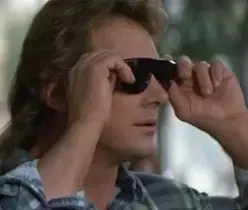- cross-posted to:
- artificial_intel@lemmy.ml
The 1994 James Cameron film True Lies starring Arnold Schwarzenegger was recently re-released in Ultra HD 4K disc format giving viewers the opportunity to watch these classic films in unprecedented detail.
Not only True Lies but Cameron’s The Abyss and sci-fi classic Aliens were also released on Ultra HD Blu-ray with Geoff Burdick, senior vice president of Lightstorm Entertainment, who tells The New York Times that he thinks they “look the best they’ve ever looked.”
But not everyone agrees.
“It just looks weird, in ways that I have difficulty describing,” the journalist Chris Person tells The Times. “It’s plasticine, smooth, embossed at the edges. Skin texture doesn’t look correct. It all looks a little unreal.”



I’m sure to make their point the authors chose some of the more egregious examples as stills for this article but godamn that really does look like shit. What were they thinking? It doesn’t even sound like a cost saving measure if the original negatives exist. The purported reasoning around it not being about the condition of the negatives but instead an opoortunity to improve on the original doesn’t make sense because you’d at the very least want to start with the original negs before “improving” the film and this phrasing makes it sound like they didn’t and considering the still in this article, it looks like they didn’t either. The way they describe the use of the technology maybe could be a net positive at some point, but this sure doesn’t seem to be an example of that. Did they just not have access to the negs or something? Was there some bizarre licensing arrangement that prevented them from doing this the traditional way? This looks so much more like an elaborate working around an obstacle rather than an even better than ideal value add kind of move. Like, if somehow all prints and copies of the film in existence disappeared except an old VHS this would be an admirable and impressive way to get to from that to a UHD release, but as a first choice option it seems like madness. It seems pointless to do this now until the tech is literally a superior result to a new remaster from the original film.
The long term goal is having an automated process to restore old films cheaply since doing it manually is a long process that requires expertise. A limited talent pool for a time intensive process is the obstacle they are trying to overcome.
They are not thinking about it from the viewer’s perspective, just how they can market that they did technically restore it with something that is passable as a quality improvement in the eyes of the majority of buyers.